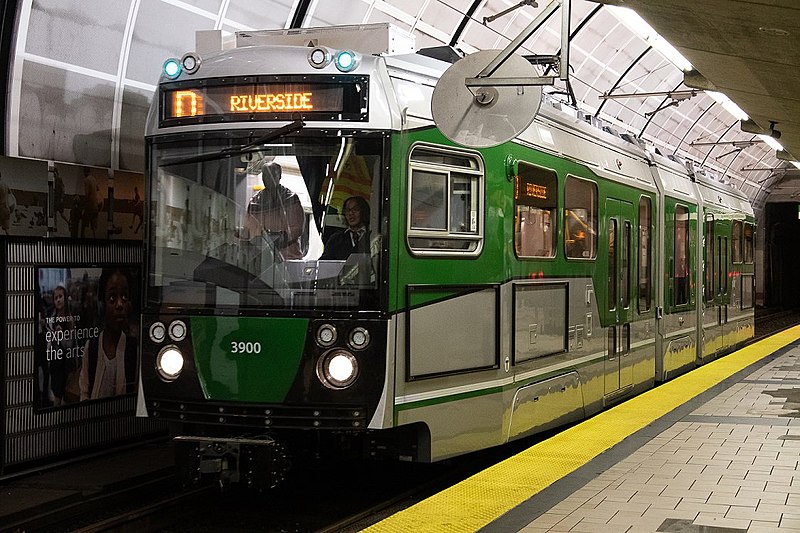The United States at one time had one of the grandest railroad networks on Earth. At its 1916 peak, operations of U.S. freight and passenger trains were conducted on a total of 254,000 route-miles of mainline track; today that number weighs in at around 140,000, or a reduction in said trackage of almost half (45 percent).
This while many other countries have been actively expanding their rail systems.
This is not to say that in America there has not been development progress on this front – there has been. But, in my opinion, it is nowhere near what it could or should be.
Therefore, my intent here with this post today is to make the case for both broader and varied types of rail service offerings here in the United States.
Getting America back on track
Over an almost 100-year timespan, Americans have seen what the effect of that domestic rail contraction has been. We’ve witnessed the dismantling of streetcar-after-streetcar, interurban, local, regional and long-distance freight and passenger train services and systems, some not since been replaced; others making comebacks. In putting into words what that progress has been like, well, let’s just say, in an effort to keep things simple, it’s been a slow and mostly arduous journey back and we’ll leave it at that.

Domestic-based locations where rail endeavors have been revived, replaced or built completely anew include: Alaska, Atlanta, Baltimore, Chapel Hill-Charlotte-Durham, Chicago, Denver, Detroit, El Paso, Honolulu, Houston, Kenosha, Little Rock, Los Angeles, Massachusetts, Miami, Minneapolis-St. Paul, New Orleans, New York, Norfolk-Hampton Roads, Oakland, Oklahoma City, Portland, Pittsburgh, Sacramento, Salt Lake City, San Diego, San Francisco, San Jose, Seattle, St. Louis, Tampa, Tempe and Washington, D.C.
Besides these, there are regional operations in California, Florida, Illinois-Indiana-Wisconsin, Maryland-Virginia-Washington, D.C., New Jersey, New Mexico, New York, New York-Connecticut, North Carolina, Oregon, Texas and Washington state and have names like ACE, BART, Brightline, Coaster, DART, HART, Lynx, MARC, MARTA, Northstar, Rail Runner, SMART and Sounder; names like these definitely capturing the imagination.
Added to these, other lines scattered across the U.S. have not only survived since their early 20th century inceptions, they are flourishing.
Systems in the aforementioned places, meanwhile, include elevated (EL), heavy rail commuter, light-rail transit, monorail, people mover, streetcar (aka tram or trolley) and subway.
Generally, pretty good coverage, I’d say. That being the case, what then, is lacking? Long-distance and high-speed. Where rail in America could stand to be better as the national long-distance passenger rail-travel picture in my opinion, has much to be desired.
Amtrak, for its part, in conducting this type of operation does a decent job. But, let’s face it, beyond the National Rail Passenger Corporation’s 457-mile-long Northeast Corridor, as a quasi-high-speed Boston-D.C. rail corridor, there is no other state-based high-speed-type train operation. But, that will change.
The contenders so far? Statewide California high-speed rail, Las Vegas, NV-Victorville, CA Brightline West and Dallas-Houston Texas Central. The first is the only one actively being built to date.
Expanded rail justification U.S.
We know that world emissions are growing and transportation is a significant contributor to the growth of that. We also know that rail – which happens to be the least utilized/relied-on transportation mode – introduces the fewest in the way of pollutant and greenhouse gas (GHG) or planet-warming emissions to the atmosphere all else being equal. Power these trains by electricity and in this regard, operations are even cleaner and cleaner still when that electricity is generated renewably. And, when you take into account that motor vehicle traffic, especially in cities and at times of peak demand or usage, the arteries on which the traffic moves can be overwhelmed thereby inhibiting traffic flow.
Add to this the safety aspect. On America’s roadways each year some 40,000 people involved in motor vehicle accidents lose their lives. With all of the advances in technology incorporated into the motor vehicle realm as it has to do with safe vehicle operation, one would naturally think the numbers of these tragic incidents would be fewer. The reality is they’re not.
Which mode – electric motor vehicle or electric train – will be more effective in getting transportation emissions in check; I mean we can debate this thing all day long and still there will be no clear winner. There are a lot of variables to take into consideration.
But there is that one thorny issue connected with motor vehicle operation that seems to just not want to go away, and that is: congestion and gridlock; traffic snarling by any other name. And how does one effectively mitigate that? I’m still waiting to find that out. There is nothing I’ve seen that gives me the confidence that we are any closer in resolving the traffic jam dilemma today than we were in the 1950s and ‘60s (that’s 60 to 70 years ago) when motor vehicle use in the United States finally passed the passenger train by and the motor vehicle dominated transportation mode market share. Who knows?! This could be the ideal time for a brand new passenger-rail renaissance.
⁃ Alan Kandel
Copyrighted material.
Above and corresponding, connected home-page-featured images: Massachusetts Bay Transportation Authority via Wikimedia Commons
Well. We can ask Scotty in Star Trek to develop a transporter system so that we can zip from place to place through electronic air waves.
“Beam me up, Scotty!”